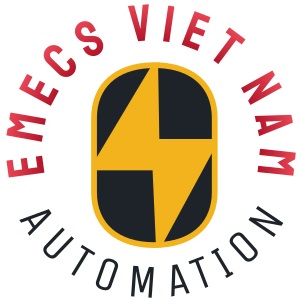Mô đun New and original Honeywell PLC TC-MUX021 SERIAL INTERFACE MODULE P/N 51404391-125,BOXZA
New and original Honeywell PLC TC-MUX021 SERIAL INTERFACE MODULE P/N 51404391-125,BOXZA
QUICK DETAILS
- Brand :Honeywell
- Model : TC-MUX021
- Place of Origin : USA
DESCRIPTION
- ADAPTER
- Output Module
Functional Description
Control Execution Environment
The Control Execution Environment (CEE) is the common core software used in the various controllers supported by Experion PKS. This includes the C200 controller, the Application Control Environment (ACE) and the C200 Simulation Environment (SIM-C200). The CEE provides an execution and scheduling environment in which the user-configured Control Modules and Sequential Control Modules execute. It also provides for a peer-to-peer communication layer used to seamlessly communicate between controllers. Implementation is transparent so that peer-to-peer connections are configured in the same way as intra-controller connections.
The CEE is specialized for each platform to provide optimal execution on that specific hardware and operating system. Specific functions are also added specifically for that platform. The platform specific versions include: the Control Solver for the C200, the ACE base software for the ACE node, and the SIM-C200 base software for the SIM-C200 node.
The CEE supports a large number of Function Blocks, which are detailed in table 11. Since the CEE is common to all platforms, applications using these Function Blocks can be moved easily between the different platforms. This allows the user the make optimal use of control resources without the need for re-implementation.
The Control Solver is the specialized control execution environment for the C200 Control Processor module. It is available in two base execution rates, 50 msec (normal) and 5 msec (fast). It features:
• Individual per-module selectable execution rates of 50, 100, 200, 500, 1000 and 2000 msec for the 50 msec CEE and 5, 10, 20, 50, 100 and 200 ms for the 5 msec CEE. All Control Modules and Sequential Control Modules, regardless of Function Block content, can, in each case, execute at any of these 6 rates. All Function Blocks within a CM or SCM execute at the same rate
• Configurable phase assignment of any module executing slower than the base rate. This provides the flexibility to “load balance” a Controller.
OTHER SUPERIOR PRODUCTS
| Yasakawa Motor, Driver SG- | Mitsubishi Motor HC-,HA- |
| Westinghouse Modules 1C-,5X- | Emerson VE-,KJ- |
| Honeywell TC-,TK- | GE Modules IC – |
| Fanuc motor A0- | Yokogawa transmitter EJA- |
schneider 140DDO35310
schneider 140NOE77101
schneider 140NOE77110
schneider 140NOE77111
schneider 140NOM21100
schneider 140NOM21200
schneider 140XTS00200
schneider 170INT11003
schneider 416NHM30032
schneider AS-S908-110
schneider LXM15MD28N4
schneider MHDA1028N00
schneider NWBM85C002 BM85C002
schneider TSX CSY84
schneider TSX P57153M
schneider TSXDSZ32R5
schneider TSXP4720
schneider XBTF034510
schneider XBTGT2220
schneider 140ACO13000
schneider 140DRA84000
schneider 140CPU65260
schneider TSX3721001
schneider 140ACO02000
schneider 170ADO35000
schneider TSXETZ410
schneider TSXP572623
schneider 140DDI85300
schneider ATV61HD37N4
schneider 140DDO35301
schneider 140CRA93200
schneider 490NRP95400
These modules, completed in AEO2016, use a suite of detailed technology choices for each process flow. Instead of the energy intensity for each process and end-use evolving according to a TPC, the processflow models use technology choice for each process flow. Energy requirements for each technology are obtained from technology estimates (e.g., expenditures, energy coefficients, and utility needs) from the Consolidated Impacts Modeling System (CIMS) database, which is prepared by the Pacific Northwest National Laboratory [5]. Depending on the industry, these data are calibrated using inputs from the U.S. Geological Survey (USGS) of the U.S. Department of the Interior, the Portland Cement Association, and the latest MECS released by EIA [6, 7, and 8].
It is the key that will help us to achieve our dreams and build a better future. Throughout the years, there are plenty of changes happen in the education system of the Philippines. Last 2015, the significant change occurs in the Philippines curriculum as the government implemented the K-12 curriculum system. In K-12 Curriculum, instead of going to the college after four years of high school, there are two additional high school years to be done to accomplish the secondary education. And in K-12 curriculum, the learning modules are introduced…
These learning materials are the new textbooks that will replace the old ones in the old curriculum. Additionally, it can help K-12 Learners to improve their performance at school. Learnings modules are just like an activity sheet as it contains many activities to be done by students. Unlike the old textbooks, these learning materials are focus on the skills and performance of the learners rather than a lot of information to be memorized.
The links below are direct Google Drive soft copy links (PDF) of the learning materials/modules (LM). It doesn’t contain any link shorteners so you can download them easily for educational purpose. Just click on the highlighted links and you will automatically be redirected to the download page (GDrive).


